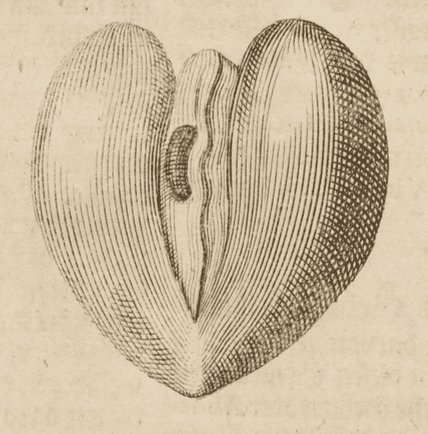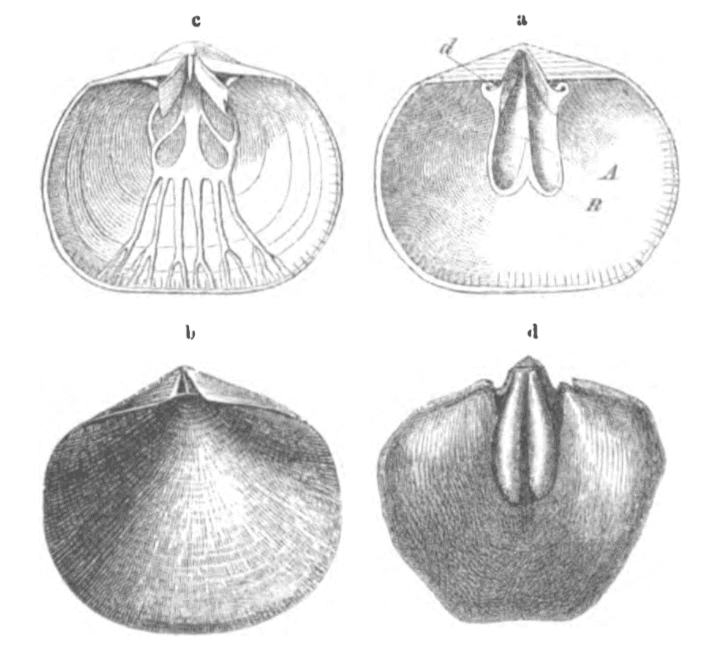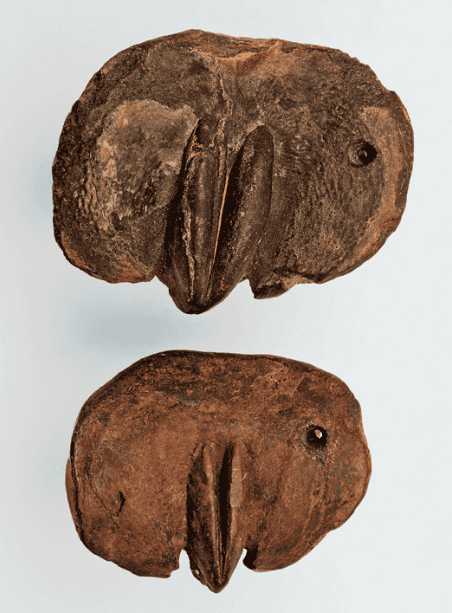Lapis Hystericus
Mother Stone, Woman Stone, Womb Stone, Vulva Stone, Stone of VenusHysterolithos, Hysteroptera
 Museum Museorum, Valentini, 1704
Museum Museorum, Valentini, 1704 Palaeozoologie, Zittel, 1876–1880
Palaeozoologie, Zittel, 1876–1880 Photo taken from Zoologische und paläontologische Objekte,
Photo taken from Zoologische und paläontologische Objekte, Carola Fey & Reinhard Ziegler (University of Heidelberg website)
Zoological name:
Fossil brachiopods, most often spiriferids and ortids. (Duffin)
Schizophoria vulvaria is commonly given as the source.
Parts used:
Internal fossil mould of the abovenamed brachiopods
Temperature & Taste:
Cool, dry. Salty
Uses:
1. Moves Qi, Regulates Uterus:
-highly regarded for Hysteria
-Amenorrhea, Dysmenorrhea, pain of the Uterus
-other diseases associated with the Uterus
-usually worm or applied to the Umbilicus
Dose:
The stone or its powder was steeped in wine and the wine drank. No specific dose has been found, however the dosage of similar Fossils would indicated a dose of 500mg–2 grams would seem appropriate in powder form; 2–5 grams of the crushed stone being steeped in wine or decocted in water.
Also used as a charm, worn externally around the neck or applied to the umbilicus.
Comment:
This was most typically used as a folk remedy and appears to have been most common in Germany. Nevertheless, many medical books and Materia Medica of the 17th and 18th centuries mention this stone.
Main Combinations:
Major Formulas:
Cautions:
None noted
